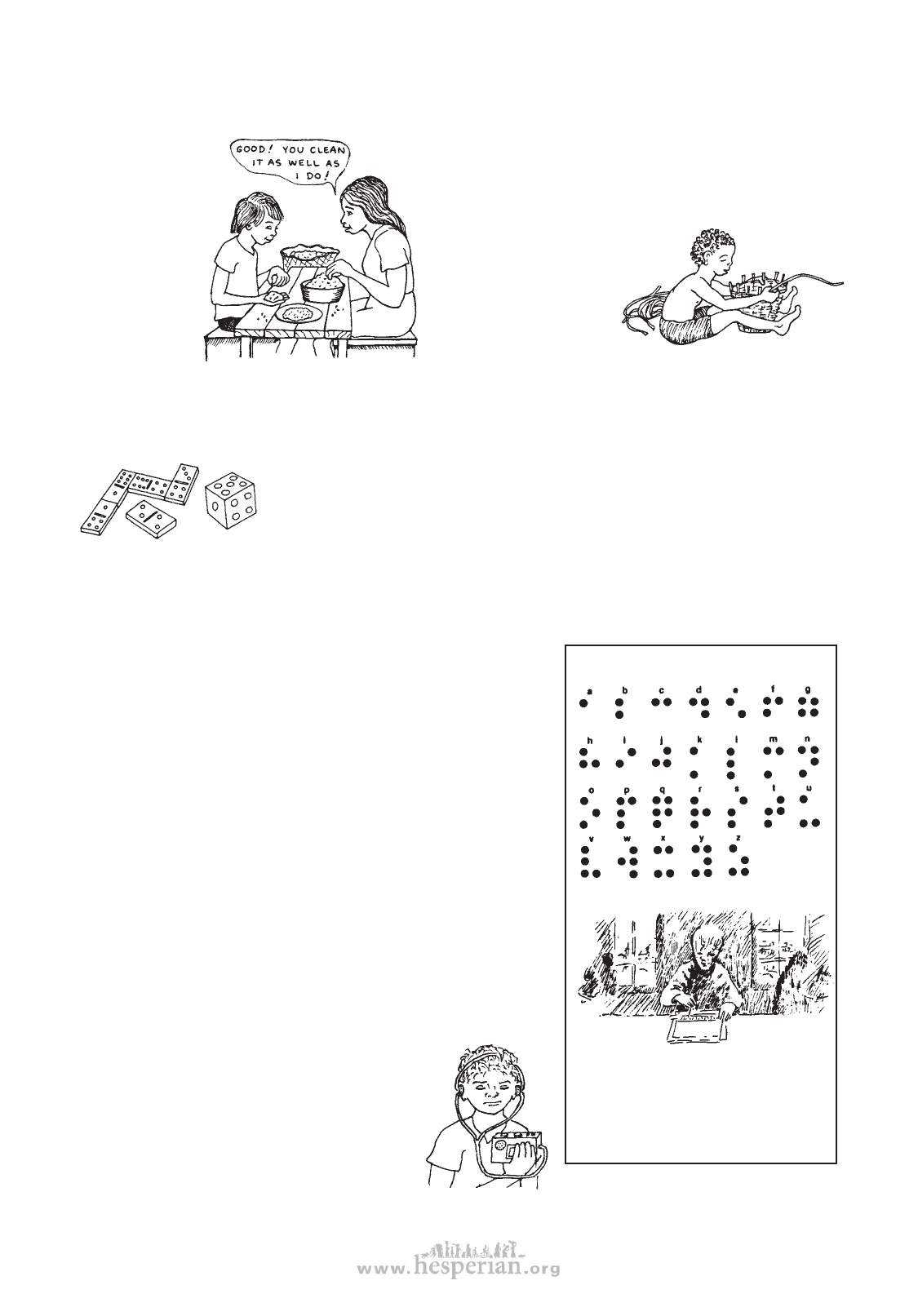
BLINDNESS
When the child has learned to handle bigger things fairly well, help her learn to feel
and handle smaller things. For example:
She can help
sister pick
the little
stones and
bits of dirt
out of the
rice.
If someone takes the time to teach him,
a child can begin to help in a lot of things
around the home, and also in village crafts.
Weaving of mats, rugs,
clothing, and baskets
are things many
blind children can
learn to do well,
and it helps them
learn to use their
hands skillfully.
Also, look for games and toys that help the child develop her ability to feel fine
details and small shapes with her fingers.
SCHOOL
For example, you can make dominos and dice out of wood. For the dots, hammer
round-headed nails into the wood, so she can feel them. Or drill holes.
The child can learn to feel the dots with her fingertips. At the same time, she will
begin to learn to count and use numbers.
You can start with ‘giant’ dominos and dice, and when her fingers learn to feel
more skillfully, change to small ones. This will be good preparation for doing many
kinds of fine work and perhaps for learning to read braille.
Blind children should have the same opportunity
as other children to go to school. Ideas for how
children in the community can help a blind child
get to school, and help her in the classroom and
with her studies are discussed in the CHILD-to-
child activity on blindness (see p. 449).
THE BRAILLE ALPHABET
In most countries there are special schools that
teach blind children to read and write ‘braille’.
Braille is a system of raised dots that represent
letters and can be read with the fingertips. It was
invented many years ago by a blind boy from
France named Louis Braille.
Most village children do not learn braille in
school. However, there are many other ways that
they can learn in school.
For the blind village schoolchild, one of the best
aids for taking notes and reviewing lessons
is a small tape recorder. The family
should try to save money to buy
one. Or perhaps the schoolchildren
can hold a raffle or collect money
to buy one. Other children can help
record lessons from school books,
and stories and information from
other books.
Louis Braille invented this dot
alphabet at age 14. The dots are
pressed into a thick paper from
the opposite side with a pointed
tool called a ‘stylus’.
253
disabled village children